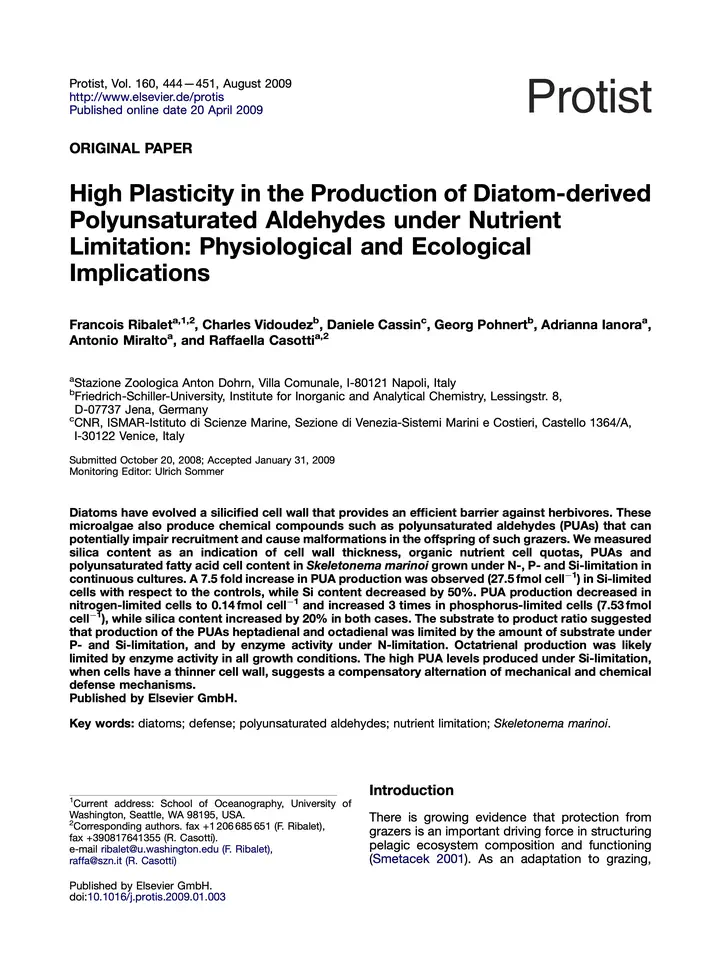High plasticity in the production of diatom-derived polyunsaturated aldehydes under nutrient limitation: physiological and ecological implications

Abstract
Diatoms have evolved a silicified cell wall that provides an efficient barrier against herbivores. These microalgae also produce chemical compounds such as polyunsaturated aldehydes (PUAs) that can potentially impair recruitment and cause malformations in the offspring of such grazers. We measured silica content as an indication of cell wall thickness, organic nutrient cell quotas, PUAs and polyunsaturated fatty acid cell content in Skeletonema marinoi grown under N-, P- and Si-limitation in continuous cultures. A 7.5 fold increase in PUA production was observed (27.5 fmol cell -1 ) in Si-limited cells with respect to the controls, while Si content decreased by 50%. PUA production decreased in nitrogen-limited cells to 0.14 fmol cell -1 and increased 3 times in phosphorus-limited cells (7.53 fmol cell -1 ), while silica content increased by 20% in both cases. The substrate to product ratio suggested that production of the PUAs heptadienal and octadienal was limited by the amount of substrate under P- and Si-limitation, and by enzyme activity under N-limitation. Octatrienal production was likely limited by enzyme activity in all growth conditions. The high PUA levels produced under Si-limitation, when cells have a thinner cell wall, suggests a compensatory alternation of mechanical and chemical defense mechanisms.